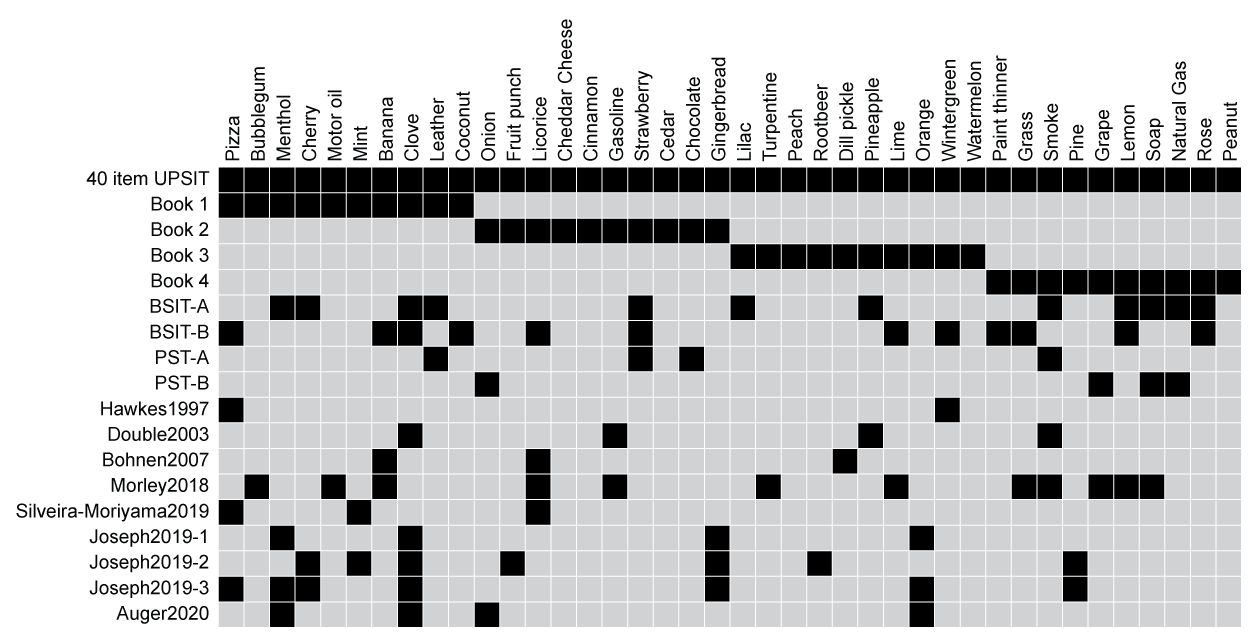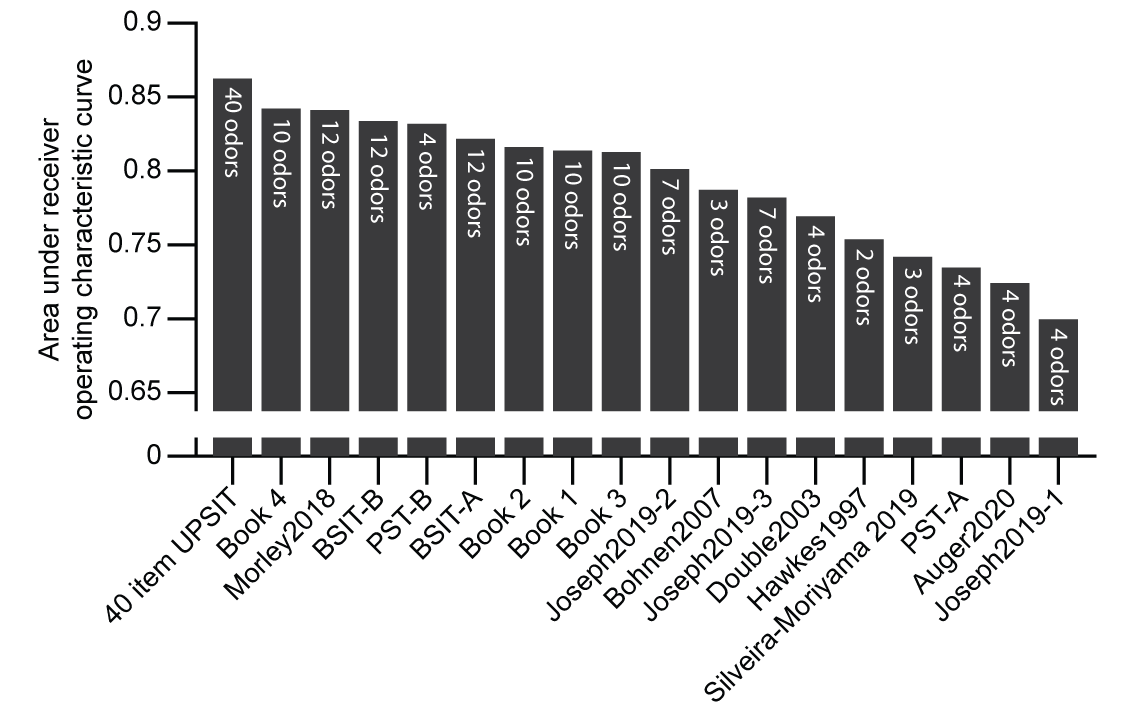Category: Parkinson's Disease: Non-Motor Symptoms
Objective: To assess the predictive value of previously published subsets of the University of Pennsylvania Smell Identification Test (UPSIT) odors for conversion to Parkinson disease (PD) in an independent, prodromal cohort.
Background: The 40-item UPSIT has been widely used to detect olfactory dysfunction and aid in the diagnosis of PD. Numerous studies have suggested that detection of odors is selectively compromised in PD and that tests comprised of subsets of UPSIT items could be shorter, less costly, and more specific. However, the items in the best subsets proposed differ widely among studies depending on the population and method of selection (Figure 1). Additionally, the proposed subsets have generally not been validated in independent cohorts nor assessed in prodromal patients where improved screening would have particular value.
Method: Participants completed up to 12 years of clinical and imaging evaluations as part of the Parkinson At-Risk Study (PARS). [123I] β-CIT SPECT (DAT) scans were completed at baseline and approximately every 2 years thereafter. Olfaction was assessed with the UPSIT and individual-item responses recorded in 231 subjects. Conversion to PD was defined as clinical diagnosis on annual assessments or DAT deficit (less than 65% of age-expected lowest putamen specific binding ratio). Predictive power of UPSIT subsets for conversion to PD was assessed by computing the area under the receiver operating characteristic curve (AUC). Nonparametric Mann-Whitney generalized U statistics accounting for covariance were used to compare AUCs.
Results: The full, 40 item UPSIT had a higher AUC for PD conversion than commercially available or previously proposed subsets (Figure 2). There was no significant difference in the AUC between the four UPSIT 10-item books or between 10-12 item subsets. Among shorter (≤7 item) subsets, the Pocket Smell Test (PST) Version B did outperform some others, including the PST Version A. In general, shorter subsets were associated with lower AUCs (Figure 2) and there was a significant relationship between the number of items included and predictive value (r = 0.76, p <0.001).
Conclusion: Previously proposed UPSIT subsets do not retain superior predictive value when examined in an independent, well characterized, prodromal cohort. The difference between the 40-item UPSIT and commercially available 12-item tests or individual 10-item UPSIT component books may be negligible for screening.
To cite this abstract in AMA style:
P. Vaswani, J. Morley, D. Jennings, A. Siderowf, K. Marek, P. Investigators. Predictive value of UPSIT subsets in prodromal Parkinson disease [abstract]. Mov Disord. 2021; 36 (suppl 1). https://www.mdsabstracts.org/abstract/predictive-value-of-upsit-subsets-in-prodromal-parkinson-disease/. Accessed October 21, 2025.« Back to MDS Virtual Congress 2021
MDS Abstracts - https://www.mdsabstracts.org/abstract/predictive-value-of-upsit-subsets-in-prodromal-parkinson-disease/



